Tmatboey: Cambodia’s Showcase for Conservation
Explore Tmatboey’s conservation triumph: spot endangered Giant Ibis, support community ecotourism, and birdwatch rare species in Cambodia’s wild north.
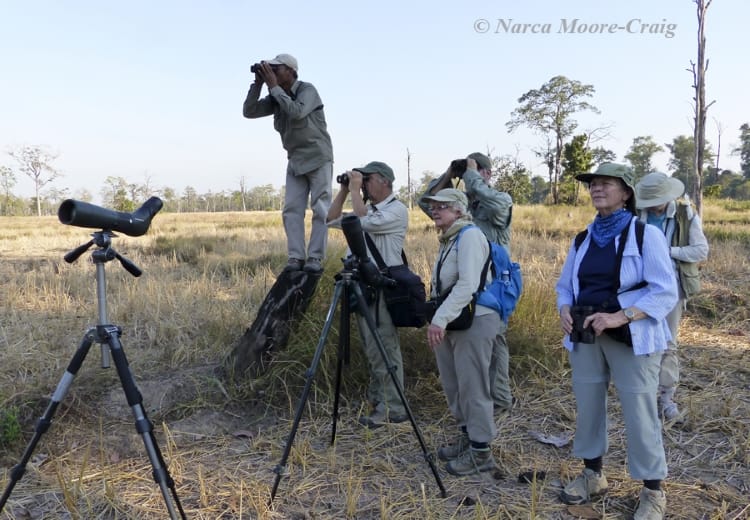
Any traveler focusing on wild nature in Cambodia must visit Tmatboey in the Northern Plains, the country’s showcase for conservation of rare species. In Tmatboey, the Wildlife Conservation Society (WCS) and its Cambodian partner, Sam Veasna Center for Wildlife Conservation (SVC), have developed a successful formula for bolstering the breeding success of some of the world’s most endangered birds, especially the Giant Ibis and White-shouldered Ibis. Both ibis have suffered precipitous population declines in the past half-century, and both are finding refuge and breeding success in Tmatboey.
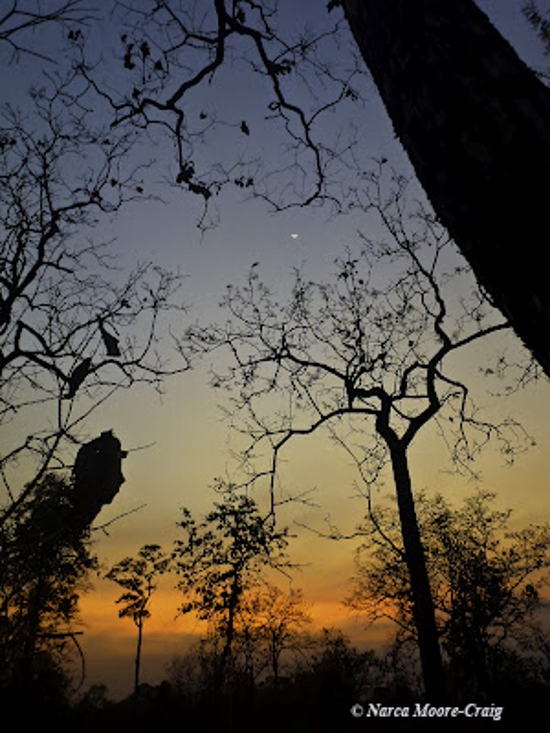
Sunset in the dry dipterocarp forest of Tmatboey, Cambodia
Local farmers report any nests they find to the WCS, which pays the farmer a bonus and sends biologists to monitor the nest. Rangers from the village are employed as well. When young birds fledge successfully, the local discoverer receives a second payment. The community of Tmatboey is now a staunch supporter of conservation, and the ibis’s numbers are increasing. In a region where a family’s income averages $350 a year, the money from ibis conservation is a substantial help.
Giant Ibis are birds of wetlands. Once associated with wild ungulates, today they depend upon grazing by domestic livestock such as Water Buffalo to maintain their short-sward grassland habitat and the muddy edges of waterholes. Critically endangered with a population estimated at only 100 pairs, the Giant Ibis survives in Cambodia and southern Laos, with a few recent sightings in Vietnam. At 3.5 feet high, it is the largest of the world’s ibis.
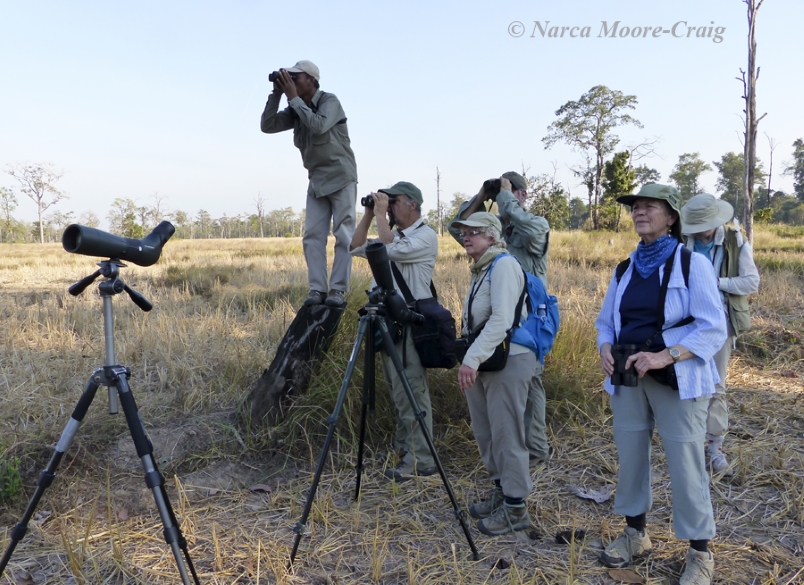
Our superb guide, Nara Duong, balances on a stump to locate the Giant Ibis
After learning the story of the Giant Ibis, we are very excited to find two individuals of this near-mythical bird foraging nearby. Our views this trip are exceptional: the ibis’s wings shimmer with silver.
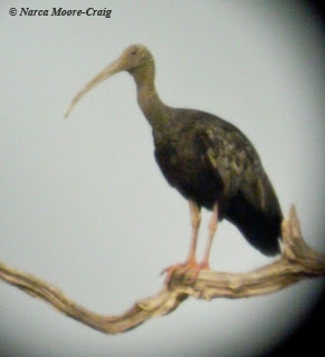
Giant Ibis, Cambodia’s national bird, in the faint light of early dawn
In addition to rare ibis, Tmatboey is a haven for many other species, from owls and woodpeckers to hornbills and bee-eaters. After exceptional luck in seeing both of the ibis well, we turn our attention to smaller delights: lovely Small Minivets, Green-billed Malkohas, Banded Bay Cuckoos. We hike into gallery evergreen forest along a river, and there keep quiet vigil. A Changeable Hawk-Eagle suns downstream.
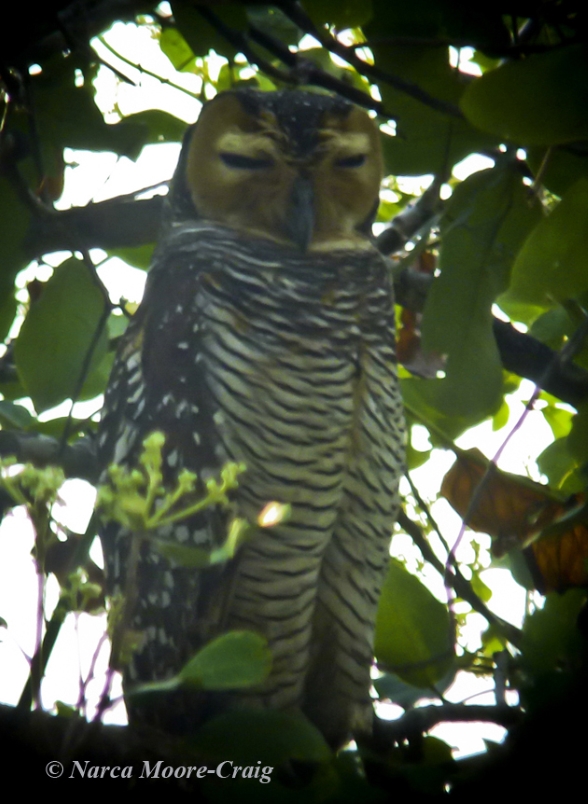
Spotted Wood Owl is one of several owls that you are likely to see at Tmatboey
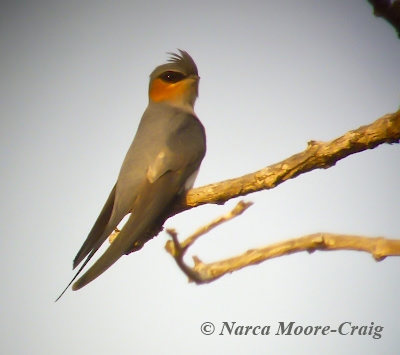
Crested Treeswifts are among my favorites of Tmatboey’s birds
As in Prey Veng, the villagers of Tmatboey have built guesthouses for visitors, and they impressed us greatly with their kindness and care. You’ll stay in duplex guesthouses, each with running water and en suite bathrooms. Cooks from the village, trained by SVC, provide all meals. The SVC website has photos of the upgraded rooms and guesthouses.
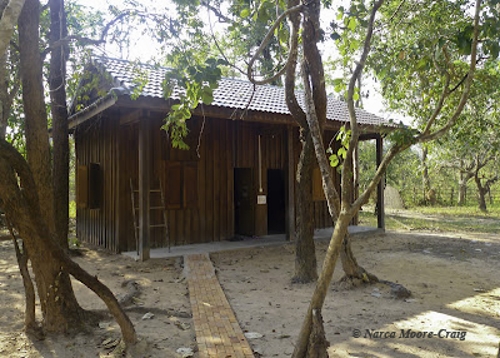
Guesthouses at Tmatboey have been upgraded since I took this photo
Inside, the recently-upgraded rooms are simple and clean. The ceiling fans are a big plus. Mosquito netting keeps out unwanted nighttime visitors (although we had no problem with mosquitos here). En suite wildlife in our room went beyond geckos to include a charming frog, perched on the bathroom mirror.
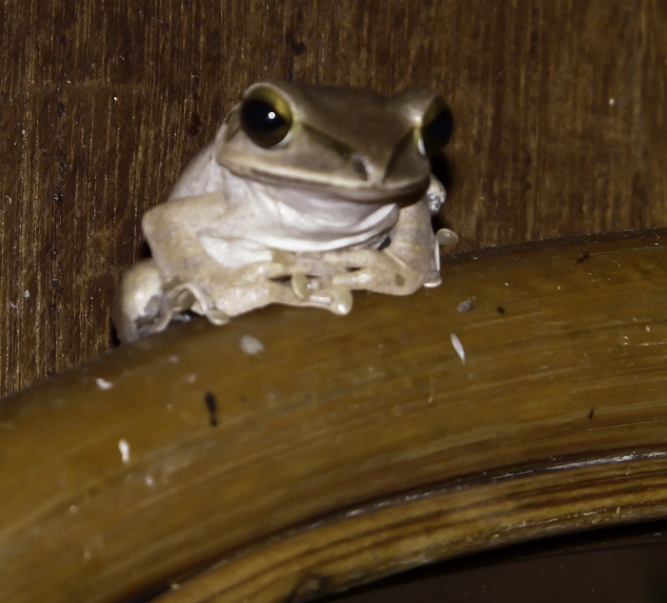
After a refreshing afternoon siesta, we head to another section of Tmatboey, to hike along a woodland edge for about a mile. (In Cambodia, most hiking is on flat ground!) Woodpeckers drum and fly between scattered trees––Gray-capped Pygmy Woodpeckers, Greater Yellownapes, Streak-throated Woodpeckers, Greater Flarebacks, and our favorite, the spectacular Rufous-bellied Woodpecker. As we return through the dusk, we find a lovely little Oriental Scops-Owl, perched just above our heads.
Three nights at Tmatboey are ideal; stay a fourth if you can! The surrounding savanna and dry forest hold a wealth of birds.




